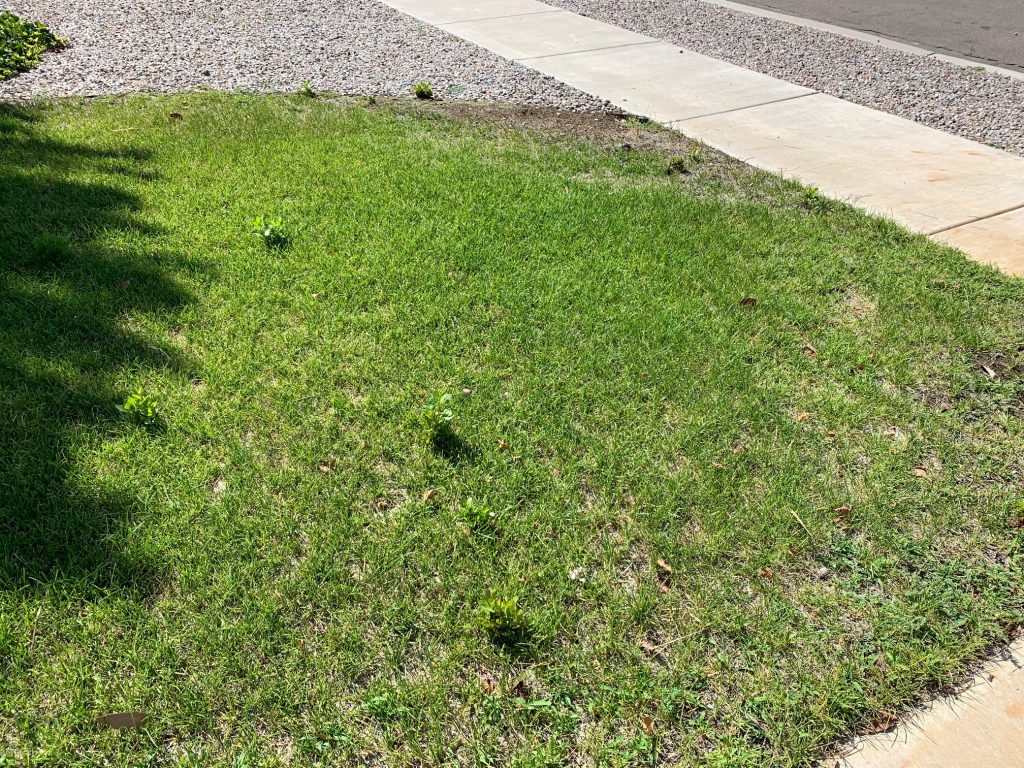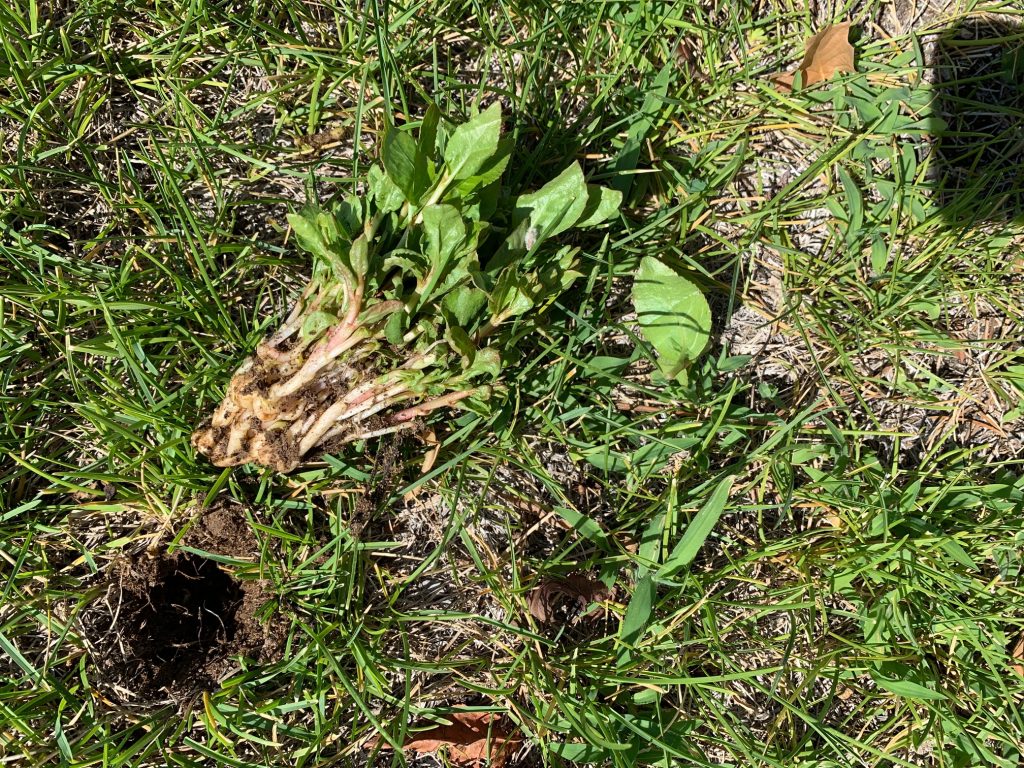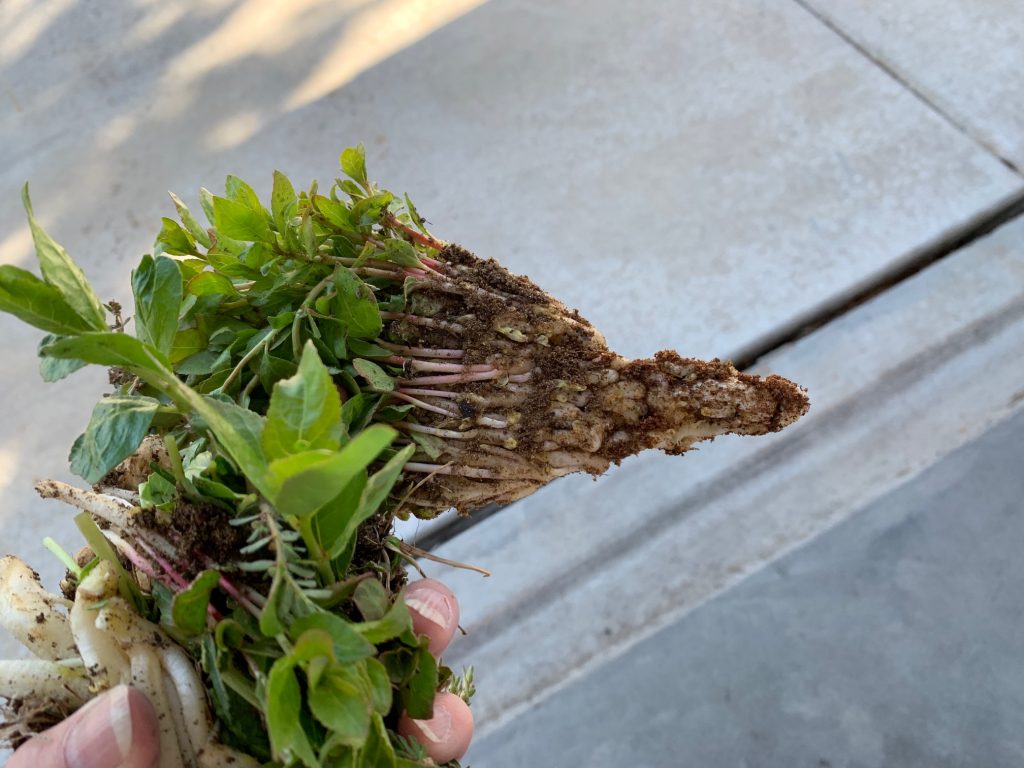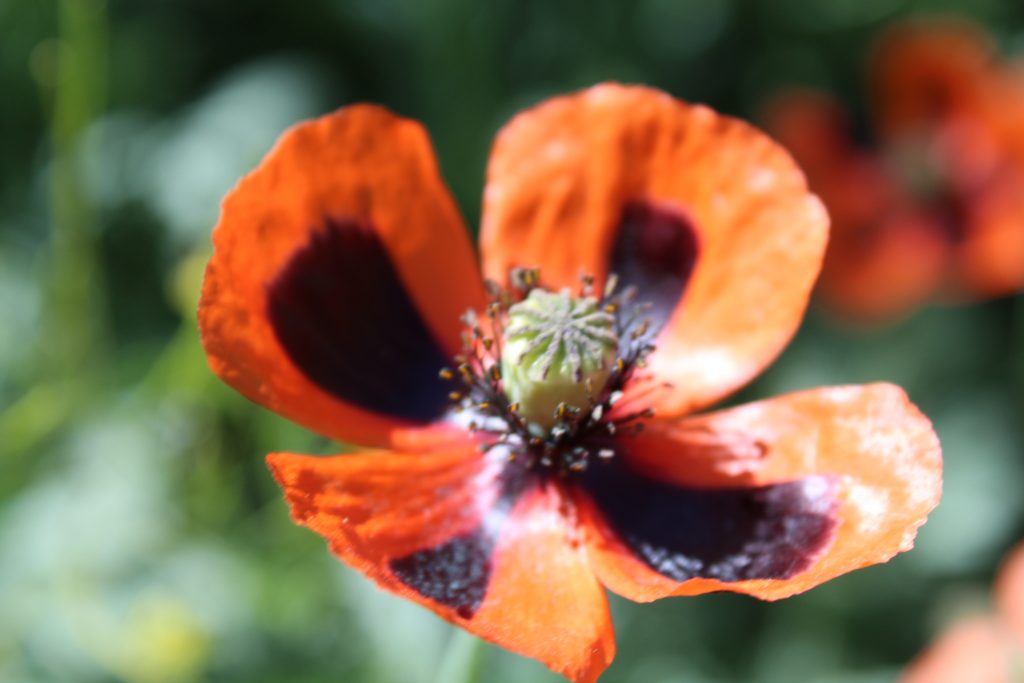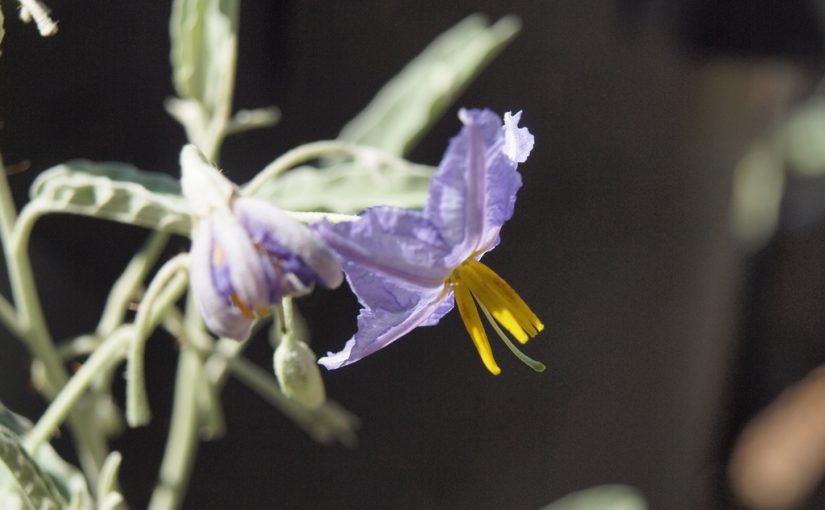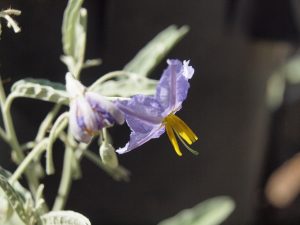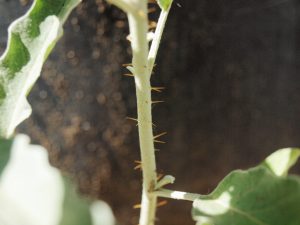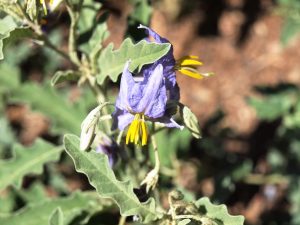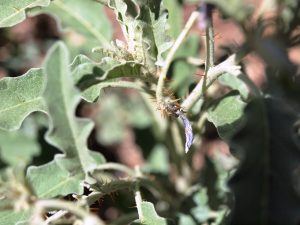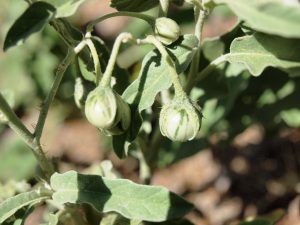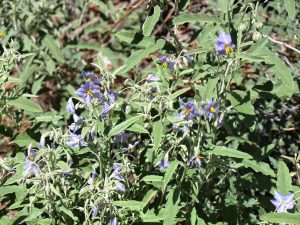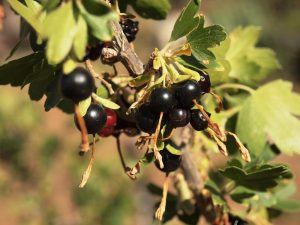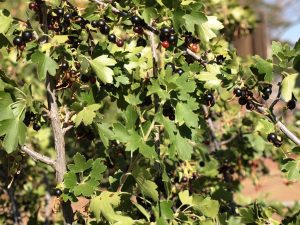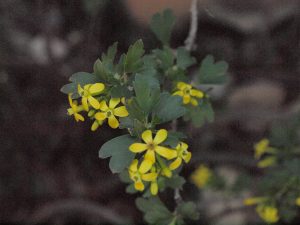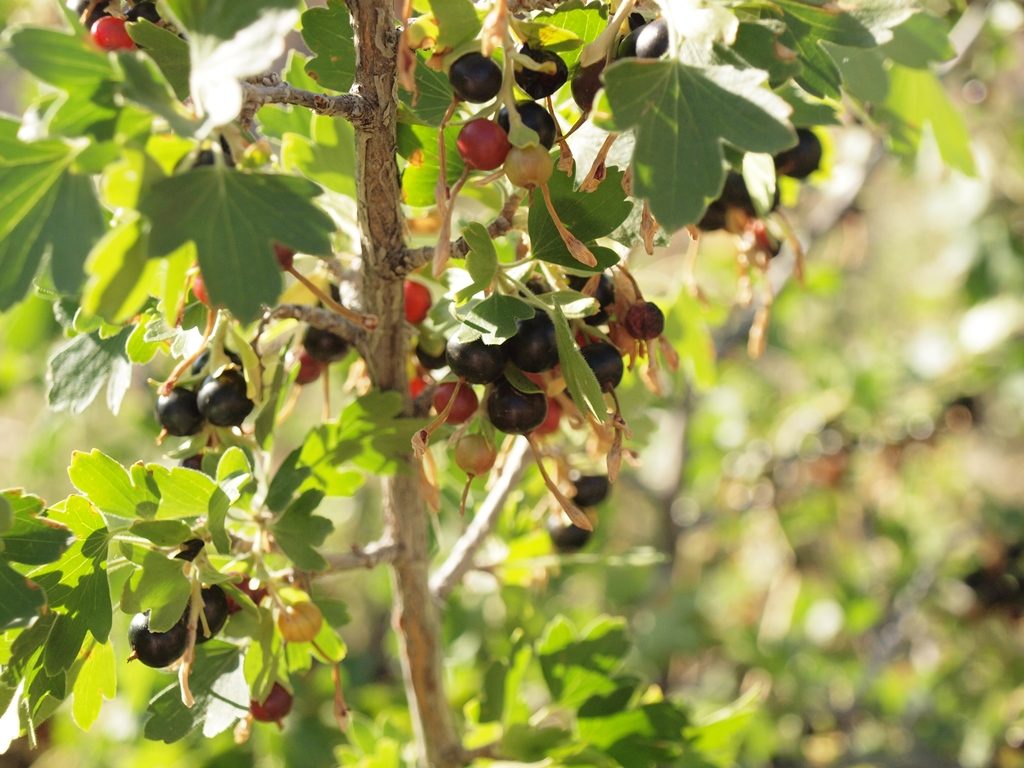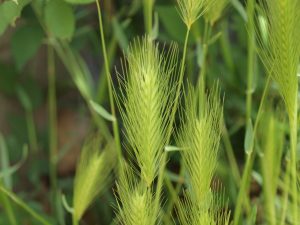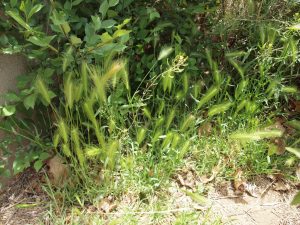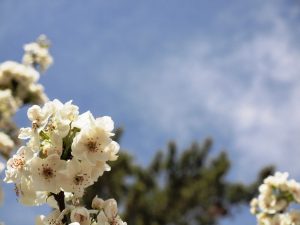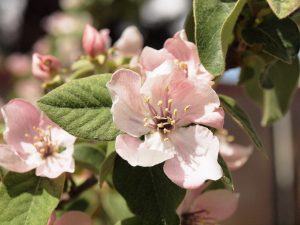It has been a while since I posted about Garden Phenology. I have noticed that the differences from year to year are usually only a few days in the flowering and beginning of growth of plants in my garden. The Phenology I post today will include the 2021 records and records back to 2017. Like the 2018 Phenology page I include some activities in the garden so that this is also a garden calendar.
Garden Phenology 2021
Jan. 31 daffodil leaves first appear
Feb. 2 wood hyacinth leaves appearing
Feb. 8 Santa Rosa plums buds swelling, showing green color, both east side and west side trees
Feb. 9 Spring Satin Plumcot buds swelling, showing green color
Feb. 20 Grape hyacinth flowers appearing in the leaves
Feb. 24 Balaton cherry (east side wall) buds swelling
Feb. 24 Black currant buds swelling
Feb. 26 Red Heart plum buds swelling
Feb. 27 Quince (west side) buds swelling
March 3 Apricot buds swelling
March 4 Grape hyacinth blooming, purple-leaf plum (east side) buds swelling
March 5 Oriental pears buds swelling (west side)
March 6 ‘Carmine Jewel’ bush cherry, persimmon, plums (Carol’s house) buds swelling
March 7 ‘Aromatnaya’ quince (east side) buds swelling
March 8 Lilac buds swelling, showing green
March 9 Red peonies sprouting, ‘Santa Rosa’ plum (east side) first bloom open
March 11 Apricot first bloom open; ‘Pineapple’ quince buds swelling
March 13 Old apple tree buds swelling
March 14 ‘Spring Satin’ plumcot first flower open
March 15 Bartlett (semi-dwrf) pear buds swelling
March 22 Littleleaf mockorange buds swelling; Red heart plum flowers open
March 29 Wood hyacinth first blossom spike visible deep in foliage
March 30 20th century Asian Pear, Pyrus ‘Nijisseki” first blossom open; Golden current blossoms open
April 1 Concord grape (front yard) buds swelling; Hosui Asian Pear flowers open
April 2 Mockorange buds swelling; Fragrant ash buds swelling
April 3 ‘Honey Crips’ apple buds swelling
April 5 Quince (west side) blossoms open; apple blossoms open
April 7 ‘Bianca’ grape buds swelling
April 8 Lilac blossoms opening; ‘Catawba’ grape buds swelling; Dwarf False Indigo buds swelling; Desert Willow buds swelling; New Mexico Olive buds swelling for real!, Wood hyacinth blooming in entryway.
April 10 ‘Balaton’ sour cherry blossoms open
April 13 Chinese Pistache buds swelling; ‘Regant’ grape and ‘Flame’ grape buds swelling; blackberry leaves out; iris bloom stalks coming up
April 23 Iris beginning to bloom
Garden Phenology 2020
Feb. 13 – daffodil leaves up (2”)
Feb. 24 – (after my return from Moldova) – ‘Santa Rosa’ plum buds swelling;
Plumcot buds swelling;
Golden currant buds swelling
Feb. 27 – Purple leaf plum and Redheart buds just beginning to swell;
quince (NW corner) buds swelling
Mar. 3 – Oriental Pear buds swelling;
‘Redheart’ plum buds swelling;
Lilac buds swelling;
‘Santa Rosa’ plum (east) blossoms beginning to open
Mar. 4 – Apricot buds swelling;
Purple leaf plum buds swelling;
‘Aromatnaya’ and ‘Pineapple’ quince buds swelling;
daffodil blossom opening;
red peony sprouts appearing
Mar. 10 – Littleleaf Mockorange buds swelling;
grape hyacinth blooming;
aspen catkins coming out
Mar. 11 – ‘Balaton’ pie cherry buds swelling
Mar. 12 – Apple buds swelling;
‘Carmine Jewel’ bush cherry at Carol’s house buds swelling
Mar. 14 – white peony sprouts appearing
Mar. 21 – Golden currants blooming
Mar. 22 – Hops sprouting from ground
Mar. 23 – Red oak catkins coming out
New Mexico olive buds swelling
Golden Rain tree (Carol’s yard) leaves appearing
Mar. 27 – Fragrant ash buds swelling
Mar. 29 – Chinese pistache buds swelling
Zoysia grass showing some green growth
Mar. 30 – Blue sage sprouting from the ground
Quince (‘Crimea’), west side, blooms opening
Wood hyacinth first bloom
Mar. 31 – Bartlet pear blossoms opening
April 1 – Asparagus shoots appearing
‘Bianca’ grape buds swelling
April 2 – Apple blossoms opening (original unknown tree)
‘Honey Crisp’ apple buds starting to open
April 4 – ‘Catawba’ grape buds swelling
Desert willow buds swelling
Lilac blossoms opening
April 5 – ‘Regant’ grape buds swelling
‘Concord’ grape (back yard) buds swelling
‘Flame’ grape buds swelling
‘Balaton’ tart cherry blossoms opening
Iris bloom stalks coming up
April 11 – Dwarf false indigo buds swelling
April 14 – hard freeze last night (23F). Grapes in back yard burned badly, ‘Catawba’ least damaged. Concord in front slight damage.
April 15 – hard freeze last night (20F). Now watching to see if I lost most of my plums, apples, pears, quince, maybe even golden currants
April 17 – Iris beginning to bloom
April 25 – Mustang grape buds swelling; ‘Bianca’ grape buds redeveloping up the stem; ‘Regent’ grape bud growing at base of plant; North garden ‘Concord’ grapes growing from base and some from up the stem; ‘Muscat’ grapes budding out again up the vines; ‘Flame’ grape some sprouting from the base, some up the vines a little
Garden Phenology 2019
Feb. 1 – daffodil leaves have appeared
Feb. 4 – Santa Rosa plum buds swelling, showing a little green;
wood hyacinth leaves have appeared
Feb. 28 – Apricot flower buds swelling
Purple leaf plum buds swelling
Quince (west) buds swelling
March 5 – Spring satin plumcot buds beginning to swell
March 7 – Grape hyacinth blossoms beginning to open
Santa Rosa plums (west) beginning to open
Lilac buds green and swelling
Bartlet pear (semi-dwarf) buds swelling
March 8 – Quince ‘Aromatnaya’ buds swelling
Quince ‘Pineapple’ buds swelling
Cherry ‘Balaton’ buds swelling
Plum ‘Redheart’ buds swelling
March 9 – Apricot blossoms opening
Hops sprouting
Lilac buds open to show panicles
March 18 – Red peony sprouting
March 20 – Red oak and Shumard oak buds swelling
March 22 – Littleleaf mockorange buds swelling
March 25 – Asparagus growing
Black currant flowers open
Zoysia grass turning green under the brown
March 27 – Red oak catkins out
Blue sage (front yard) sprouting
March 29 – Fragrant ash buds showing green
March 30 – Concord grapes (front yard) buds breaking
‘Honey Crisp’ buds opening
Oriental ‘Nijisseki’ pear flowers opening
White peony sprouting
March 31 – Wood hyacinth (front porch) blooming
‘Bartlett pear’ (semi-dwarf – blossoms opening
April 1 – Quince (west side) flowers opening
April 2 – ‘Bianca’ grape buds swelling
‘Catawba’ grape buds swelling
April 3 – Apple blossoms opening (large tree suckers)
Chinese pistache buds swelling
April 5 – desert willow buds swelling
April 6 – lilac blossoms opening
‘Balaton’ sour cherry flowers opening
April 8 – ‘Regant’ grape buds swelling
‘Flame’ grape buds swelling
April 18 – ‘Mustang’ grape buds swelling
‘Aromatnaya’ quince flower open
April 19 – first iris blossom open
Mustang grape buds swelling
Anisacanthos buds swelling
April 23 – pecan (rootstock?) buds swelling
Garden Phenology 2018
Jan. 30 – wood hyacinth leaves appeared in entryway garden
Feb. 5 – Santa Rosa plum buds swelling, showing some green
Feb. 6 – Daffodil leaves appearing in front yard under the oak tree
Feb. 10 – Quince buds swelling, scales opening at the tip of some buds
Feb. 12 – Golden currant buds swelling
Feb. 26 – Apricot buds beginning to swell. Quince buds expanding in spite of low temperatures as low as 12 F. Santa Rosa plum flower buds do not appear to be injured by the 12 F last night.
Feb. 28 – Lilac buds swelling. Quince buds “exploding”! Santa Rosa plum buds beginning to show white (petals).
March 1 – Purple-leaf plum buds beginning to swell – a bright purple bud obvious near the base of the small plant (1 ft. high).
March 3 – Daffodils begin opening flowers
March 5 – Pear buds swelling (opening at the tip); Santa Rosa plum blossoms beginning to open
March 8 – Apricot blossoms beginning to open. Santa Rosa plums show no injury from the cold weather.
March 10 – Grape hyacinths blooming
March 12 – Asparagus coming up
March 14 – Lilac buds opening to show panicles
March 16 – Redheart plum (planted Feb. 28) buds swelling; pear flower buds revealed in opening buds; quince flower buds revealed above new leaves in opening buds; golden currant flower buds revealed.
March 19 – Balaton pie cherry buds beginning to swell. It was 26F in the garden last night, but the buds are still swelling. Red peony shoots appearing above ground.
March 20 – Hops are sprouting.
March 21 – Texas red oak and Shumard oak buds swelling.
March 23 – Littleleaf mockorange (Philadelphus microphyllus) and fragrant ash (Fraxinus cuspidate) buds are swelling; apple buds (one of the varieties on the big backyard tree) has buds opening – other apples not yet opening; dwarf North Star pie cherry buds beginning to expand; first golden currant flowers opened.
March 24 – White peony shoots appearing.
March 25 – Blue sage (Salvia azurea) starting to appear in front yard.
March 26 – First quince blossoms opened, black centers may indicate cold damage; first Oriental pear blossoms opened, they look good, but low temperatures coming.
March 30 – Texas red oak catkins formed
March 31 – Concord grape buds swelling; Desert willow buds beginning to swell; Zoysia grass sprouting. Dwarf Bartlett pear buds swelling.
April 1 – Lakota pecan buds swelling.
April 2 – Honeycrisp apple buds swelling, Anisacanthus quadrifidus var wrightii buds swelling.
April 3 – Dwarf bearded iris blossom scapes developing; Texas red oak and “Shumard’ oak leaves appearing; Leucophyllum leaves developing; first chocolate flower blossom opened.
April 4 – New Mexico olive (Forestiera neomexicana) buds swelling.
April 5 – ‘Regent’ grape buds swelling.
April 6 – Chinese pistache buds swelling; Mexican evening primrose (Oenothera Berlandieri) blossom open.
April 7 – ‘Flame’ and ‘Catawba’ grape buds swelling.
April 9 – ‘Balaton’ tart cherry flowers open.
April 11 – ‘Aromatnaya’ quince flower open.
April 12 – ‘North Star’ tart cherry flowers open; Star of Bethlehem (Ornithogalum) blooming; Mimosa (Albissia julibrisin) leaves forming.
April 16 – Crape Myrtle (Lagerstroemia indica) leaf buds opening.
April 18 – Fragrant ash (Fraxinus cuspidata) flowers open. Frost (26F) damaged ‘Lakota’ pecan, ‘Flame’ grape, ‘Bianca’ grape, ‘Regent’ grape – all had new tender shoots. All tender shoots on the pecan were damaged, maybe it will be able to resprout; only some of the tender shoots on the grapes were damaged, so they should regrow and produce a crop this year.
April 26 – One codling moth in pheromone trap in apple tree; ‘Lakota’ pecan auxiliary buds below freeze killed shoots and dormant buds that had not begun growing are swelling and showing green – the pecan may survive!
Garden Phenology 2017
Feb. 6 – daffodils sprouting in front yard
Feb. 7 – Santa Rosa plum buds swelling, showing white
Feb. 16 – Quince flower buds swelling
– Black current buds swelling
Feb. 17 – Apricot buds showing pink
Feb. 19 – daffodil flower buds show in center of foliage
Feb. 22 – Black current leaves beginning to expand
March 1 – Santa Rosa plum blossoms beginning to open
March 4 – Lilac blossoms beginning to expand, showing panicle
March 5 – Apricot blooms opening
March 8 – Daffodils under oak tree in front blooming
– Grape hyacinth next to planter box blooming
– Concord grape layers in pots show buds swelling, no swelling on other Concords or other grapes
March 9 – Hops coming up, still under mulch
– onion transplants arrived from Dixondale Farms
March 12 – Sour cherry buds swelling, showing green
– large apple tree buds swelling, showing green
– wood hyacinth inflorescence visible deep in foliage
– plum leaves forming
– apricot leaves beginning to form
March 13 – red peonies coming up
– black currant flower buds evident
– quince flower bud visible at tip of new growths
March 14 – Bartlett pear buds swelling
– grape buds swelling
March 16 – Black currant flowers opening
– Oriental pear flowers opening
March 17 – planted onions
March 18 – Flowering ash buds beginning to show green
– Quince flowers pink, not yet open
– finished planting onions
March 19 – Lilac first florets open
– Quince flowers open
March 20 – Philadelphus microphyllus leaves appearing
– Desert willow leaves appearing
– Blackberry ‘Chester’ leaves appearing
March 21 – Bartlett pear blossoms opening
March 22 – Apple blossoms opening
– Chocolate flower open
March 27 – Balaton sour cherry blossom open
March 29 – Star of Bethlehem first flower opened
– Blue salvia coming up
March 21 – White peony coming up
April 4 – North Star sour cherry blossoms opened
April 5 – hard freeze – 20F; apple blossoms, pear blossoms, some cherry, lilac blossoms turned brown!
April 10 – New Mexico olive (Foresteria neomexicana) transplanted from backyard to side yard a month ago is showing green in the buds.
April 11 – Fragrant ash (Fraxinus cuspidata) flowers turning white
April 12 – blue salvia sprouting (again after being frozen down)
April 18 – Crepe Myrtle buds breaking
April 21 – sprayed spinosad – apples, pears, currants
April 26 – Joy died
May 1 – sprayed spinosad – apples, pears, currants
